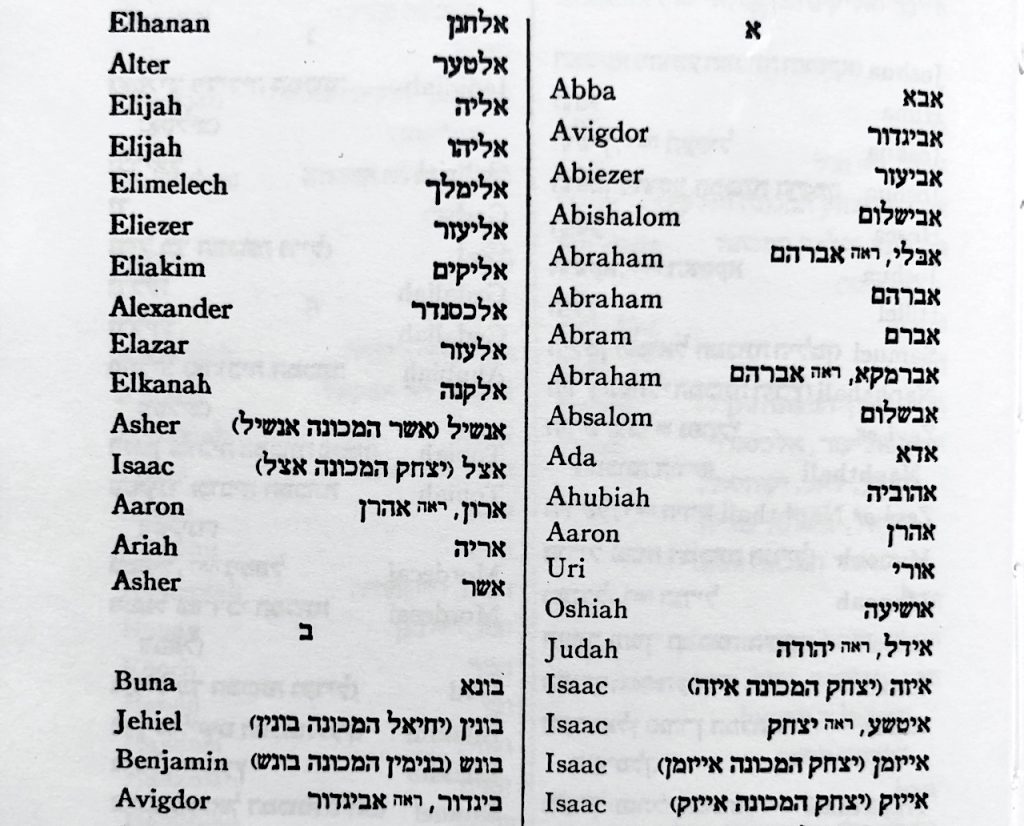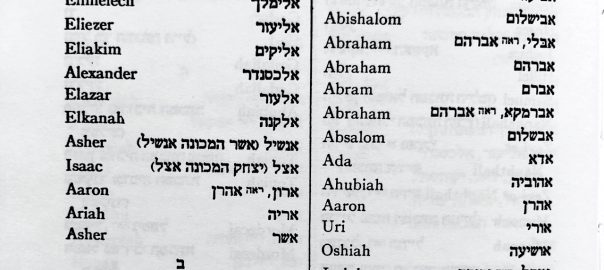Adding to my recent series of Jewish given name lists (see my Names page for links to all the articles on names) is this list which comes from a US-published guide for pulpit rabbis. The book, called Hamadrikh (ְהַמַּדְרִיך), was initially published in 1939, and later revised in 1956. For decades it served as a unique guide to rabbis on how to perform specific rituals, with lists of prayers for things like marriage, circumcision, redeeming the first born, bar mitzvahs, dedicating a new torah, a new synagogue, laws related to visiting the sick, adding a name, the dying, etc. One important section deals offers templates for inscriptions to be used on gravestones. It’s likely many of the gravestones inscribed in the subsequent decades in the US followed the templates present in this book.

In addition, near the very end of the book are lists of Jewish given names. The names are intended to help rabbis determine what the actual name of a person was when dealing with Jewish legal documents (such as a marriage contract or a divorce certificate). The reason this was needed was many people were using names that were not considered names according to halacha (Jewish law). In essence the names they were using were nicknames, and not what was required on legal documents. As such, the list indicates when a name should not be used, and a formulation on what do when someone uses one of the names.
For example, if a man wanted to get married and he told the rabbi his name was Isaac (אייזק), not Yitzchak (יצחק), then the rabbi would write יצחק המכונה אייזק (Yitzchak known as Isaac) in the legal document. In addition to these legal names, the list also point to related names using the word ראה (see), as in אדיל, ראה יהודה (Idel, see Yehuda) meaning that the name Idel is a variant of Yehuda.
This page contains the male names from the book, and includes 305 names. For the female names, see US Rabbinical Guide to Female Jewish Names from 1939.
While the book has English names lists for each name, it uses the halachic name only, so for each variant of a name, it will not show the English names (only repeat the halachic name). To help use this list I’ve added my own versions of the names in English. So in the table below you have the Hebrew name followed by my English version. Next you have a column for the halachic name, or the referenced name (see). Last, I include the English name present in the book for each name. Many of the book’s transliterations of names, even if for the actual name, use outdated versions of these names (such as using J for all names beginning with the letter י (yud), like Jakkir instead of Yakir, or Jeruham instead of Yerucham.
The table below is searchable, and you can sort by each column. For example, you can sort by Hebrew or English name, or sort by Halachic name to see all the names that are linked to those names.

I think your website is a wonderful resource! I find myself returning to it over and over, which is probably how I happened to notice the typo in your list of male names from Hamadrikh. You have listed the name פתניה Petania, but if you check Hamadrikh you will see that the Nun should be a Chet.
Thank you for all the valuable information you provide! It was on account of your blog post on the U.S. Rabinical Guide to Names that I searched for and was able to find and buy a copy of this book for myself!
Thank you. You’re right, there was bound to be a typo in there somewhere. I’ve fixed it now.